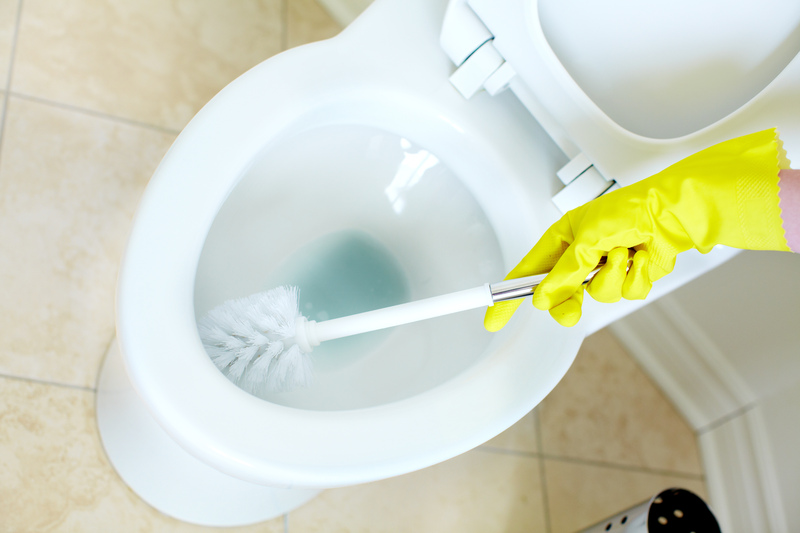Simple Fixes for Reducing Damp Smell
Posted on 08/06/2025
Simple Fixes for Reducing Damp Smell: A Comprehensive Guide
If you've ever walked into a room and been greeted by a musty odor, you're not alone. Damp smells, sometimes called musty odors or mildew scents, are common problems in homes, especially in basements, bathrooms, and areas with poor ventilation. Not only are these odors unpleasant, but persistent dampness can also signal issues like mold growth, which can harm your health and damage your property. But don't worry! This article will walk you through simple solutions for reducing damp smells, helping you achieve a fresher, cleaner home atmosphere.

Understanding the Causes of Damp Smell
The first step in eliminating damp odors is understanding where they come from:
- Poor ventilation traps moisture indoors.
- Leaks from roofs, pipes, windows, or walls let water seep into the home.
- Condensation builds up in cold rooms, bathrooms, or kitchens.
- Mold and mildew on surfaces or hidden in drywall release unpleasant, dank smells.
Musty or damp odors are warning signs. Addressing them not only improves your home's scent but also prevents larger issues like structural damage or health risks.
Simple Fixes for Reducing Damp Smell at Home
Now, let's explore actionable steps and home remedies to reduce and eliminate musty odors quickly and effectively.
1. Improve Ventilation
Proper airflow is the key to fighting humidity and reducing the damp smell in any space. Here's what you can do:
- Open windows and doors regularly to encourage cross-ventilation.
- Use exhaust fans in kitchens, bathrooms, or laundry areas. Install them if necessary.
- Invest in a dehumidifier. These devices pull moisture directly from the air and are especially helpful in basements or bathrooms prone to dampness.
- Consider an air purifier with a HEPA filter to remove mold spores and odors from the air.
2. Identify and Fix Water Leaks
Nothing beats nipping the problem at its source.
- Check for leaks under sinks, behind toilets, in the attic, or in the basement.
- Repair faulty seals around bathtubs, sinks, and windows.
- Examine your roof and gutters. Clogged gutters or broken shingles can let water seep in, causing hidden dampness.
Fixing leaks quickly is one of the best ways to reduce musty smells and keep your home dry.
3. Clean and Dry Damp Areas Thoroughly
Damp smell often lingers because moisture is allowed to stay. Here's how to address it:
- Launder fabrics regularly, including curtains, rugs, and cushion covers. Damp textiles easily trap odors.
- Wipe surfaces dry after cleaning or after leaks.
- Clean up any visible mold or mildew with a mixture of water and white vinegar or a commercial antifungal spray. Always wear gloves and a mask when tackling mold.
- Discard irreparably damp items like old newspapers, magazines, or boxes that can harbor odors and mold.
4. Use Natural Deodorizers and Absorbers
Sometimes, even after ventilation and cleaning, a subtle damp scent lingers. That's where natural deodorizers come into play:
- Baking soda: Place open containers of baking soda in closets, cabinets, and corners. This powerful odor absorber can neutralize musty smells over time.
- Charcoal: Activated charcoal packs or bags absorb excess moisture and odors efficiently.
- White vinegar: Leave a bowl of white vinegar in a damp-smelling room overnight. Vinegar neutralizes odors without leaving a residue.
- Salt: Bowls of salt can draw moisture from the air in small spaces.
- Essential oils: Add a few drops of lavender, eucalyptus, or tea tree oil to cotton balls for a pleasant, fresh scent and extra antibacterial effect.
5. Maintain Your Home's Humidity Level
Ideal indoor humidity is between 30% and 50%. Anything higher can encourage mold growth and damp odors. Measures to control humidity include:
- Use a hygrometer to monitor humidity levels.
- Run air conditioning and heating systems which naturally dehumidify the air.
- Fix damp basement or crawl space flooring with proper insulation and vapor barriers.
6. Inspect and Clean Air Ducts
HVAC ducts are often overlooked but can be breeding grounds for mold, dust, and musty smells.
- Hire professionals to inspect and clean air ducts, especially if you detect a persistent damp smell when the system runs.
- Change HVAC filters every 1-2 months.
7. Repaint Walls With Mold-Resistant Paint
Old paint can trap odors or provide a substrate for mildew. For walls with recurring moisture issues:
- Remove any visible mold before painting.
- Use primer and paint formulated for mold and mildew resistance, especially in bathrooms, kitchens, and basements.
Room-by-Room Tips for Reducing Damp Odor
Basements
- Install a sump pump if your basement floods or gets damp after rain.
- Seal foundation cracks using concrete sealant to block moisture entry.
- Store items off the floor on shelves or pallets. Avoid cardboard boxes, which absorb moisture and grow mold.
Bathrooms
- Wipe down tiles, shower curtains, and wet surfaces after each use.
- Open a window or run the exhaust fan during and after showers.
- Use mildew-resistant shower liners and wash bath mats weekly.
Bedrooms
- Air out bedding and flip mattresses regularly.
- Limit the number of indoor plants if there isn't enough sunlight and airflow.
- Leave closet doors open occasionally to disperse trapped humidity.
Kitchens
- Repair any leaks from sinks, dishwashers, or refrigerators promptly.
- Ventilate while cooking by using the range hood or opening windows.
- Clean under appliances and in cabinets to prevent food and moisture build-up.
Quick Home Remedies to Remove Damp Smell Fast
If you need a rapid fix for musty odors before company arrives or during humid spells, try these tips:
- Simmer water with lemon slices, cloves, or cinnamon sticks on your stove for a few minutes.
- Spritz a mixture of water and a few drops of essential oil lightly around the room.
- Use fabric sprays (make sure they're safe for your upholstery) to neutralize odors on sofas and curtains.
- Run a fan facing out the window to push stagnant air and odors outside.
How to Prevent Damp Odors from Returning
The key to keeping musty smells at bay is consistent prevention. Here's how:
- Stay on top of cleaning and maintenance. Regularly check for moisture, leaks, and signs of mold.
- Ventilate daily, especially after activities that create humidity.
- Use moisture absorbers in problem areas such as closets or laundry rooms.
- Insulate colder walls and floors to reduce condensation.
Health Risks Associated with Persistent Damp Smell
Persistent dampness and musty smells are often linked to mold growth. Prolonged exposure can lead to:
- Allergies or worsening asthma symptoms
- Respiratory issues like wheezing or coughing
- Headaches or skin irritation
- Potential long-term lung complications
If you or your household members experience these symptoms, or if the damp smell persists despite your efforts, it may be time to call a professional to assess for hidden mold or water damage.

When to Call in the Professionals
While many simple damp smell fixes can be tackled with DIY hacks and diligent cleaning, some situations require expert help:
- Large visible mold patches (greater than 3 square feet)
- Persistent dampness or leaks you can't trace or resolve
- Reoccurring health symptoms linked to indoor air quality
- Extensive water damage after leaks or floods
Professional mold remediation or water damage restoration ensures your home is safe, structurally sound, and free from hidden sources of odor.
Summary: Enjoy a Fresh, Odor-Free Home
Reducing damp smell is totally achievable with everyday efforts and regular home care. By improving airflow, controlling moisture, using natural deodorizers, and fixing leaks quickly, you can keep musty odors away for good. Remember, prevention and consistency are your best tools for a clean-smelling, healthy living space.
Take action today with these simple fixes for musty smells, and breathe easier knowing your home is as fresh as it is comfortable.




